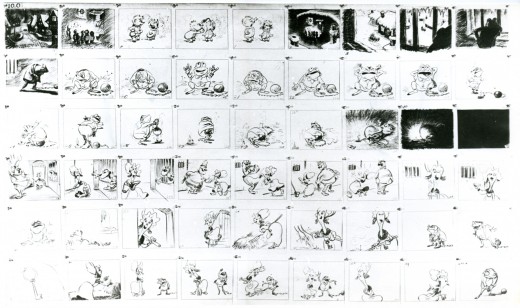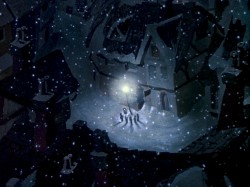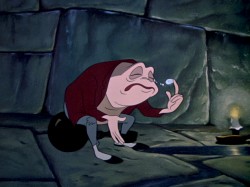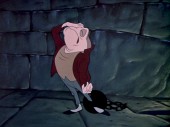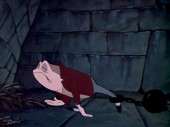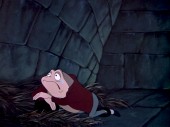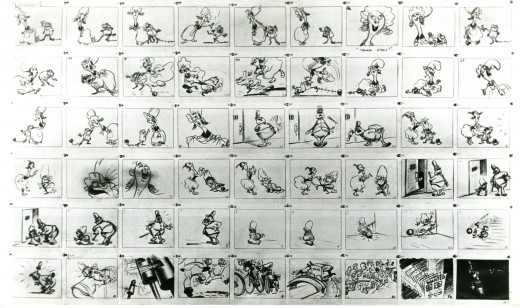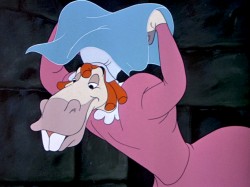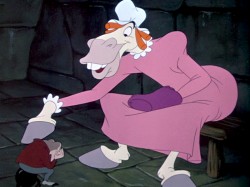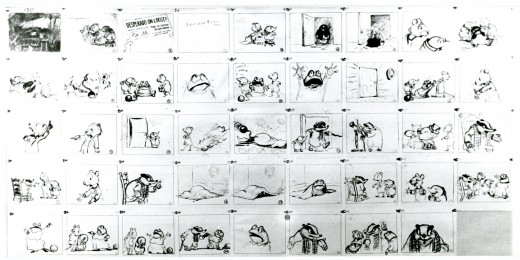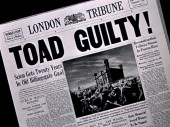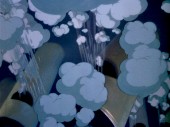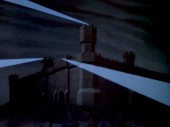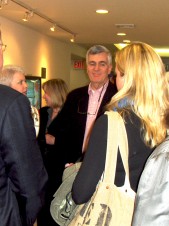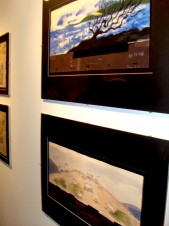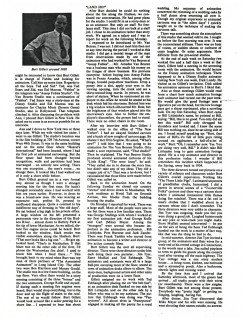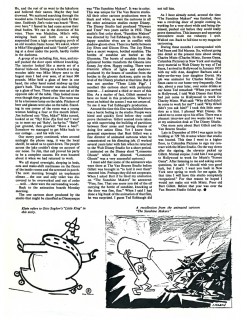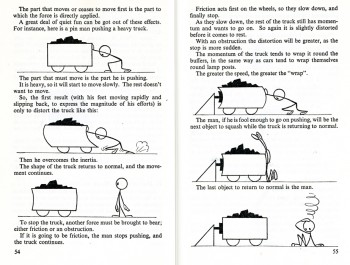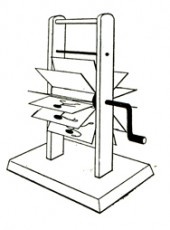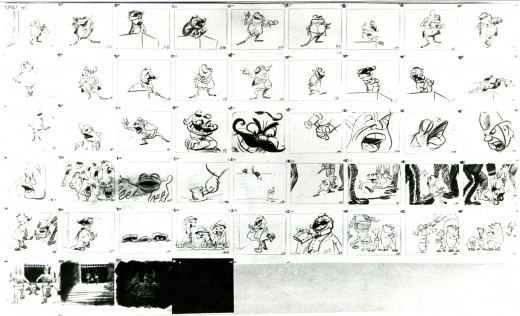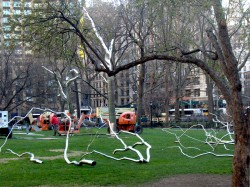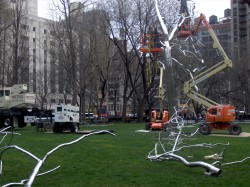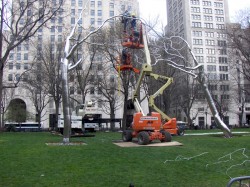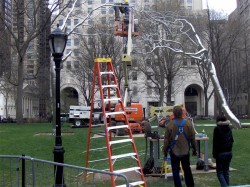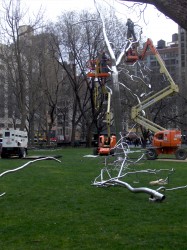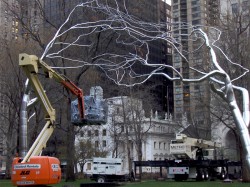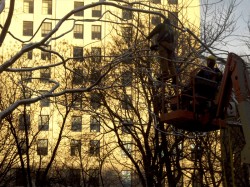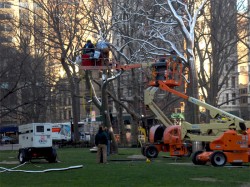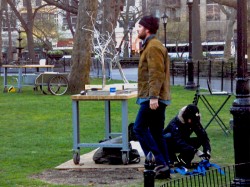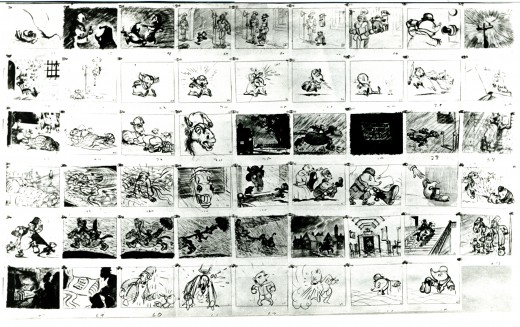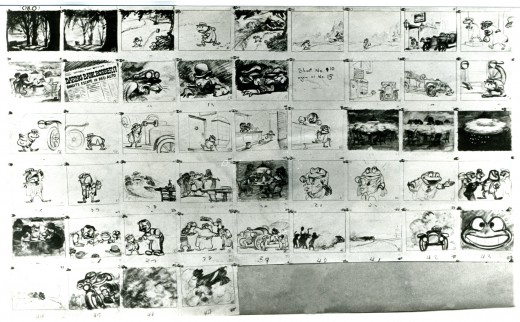Monthly ArchiveApril 2007
Animation Artifacts &Story & Storyboards 20 Apr 2007 08:23 am
W in the W – part 3
Continuing with the posts of the storyboard for The Wind In The Willows, here are sequences 10 through 13. Once again, this board was probably used for the pose reel done in 1941 when the film was trying to be a feature film. (This is the reason no captions lie beneath the images.) Thanks again to John Canemaker for the loan of the board to post.
I took a look at this sequence in the film that stands, and it’s wholly different. They’ve really compacted the scene in a clever way, but something of the character development is also shortchanged.
I’m posting frame grabs underneath the boards.
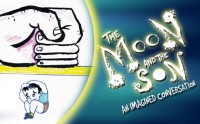 – Speaking of John Canemaker, he had a great event last night with a screening of his movie, The Moon and the Son: An Imagined Conversation,
– Speaking of John Canemaker, he had a great event last night with a screening of his movie, The Moon and the Son: An Imagined Conversation,
at the Beekman Theater followed by the opening of a showing of art from his film at Manhattan Marymount College.
The last time I saw a program of animation at the Beekman Theater it was the screening of John & Faith Hubley‘s Of Stars And Men back in 1964. As with that opening (I was there back then to see my first Hubley films), there weren’t many from the animation community in attendance. Tissa David came out to support John and was shy when John introduced her.
I was at the gallery opening and loved it. There was a large group, and the art was sensational (as was the wine and hors d’oeuvres.)
Kudos and congratulations to John Canemaker and his companion, Joe Kennedy.
You can still catch the art trip at the Hewitt Gallery of Art at
. . . . . . . . . . . . . Marymount Manhattan College, located at 221 East 71st Street.
. . . . . . . . . . . . . ____________________. . . . . . . . . . . . . . . . . . . Now through May 23rd.
Articles on Animation 19 Apr 2007 07:58 am
Klein’s Van Buren
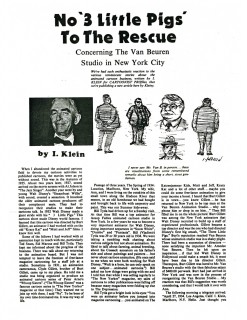 – The Sunshine Makers seems to be the Van Buren short to outlive others.
– The Sunshine Makers seems to be the Van Buren short to outlive others.
Here’s an article by Izzy Klein from Cartoonist Profiles, Dec. 1976. The focus is on Burt Gilette, the director of The Three Little Pigs (among other Disney classic shorts), after his return to Van Buren.
. . . . 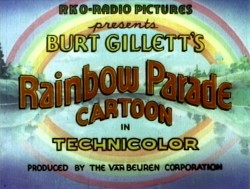
. . . . . .(Click any image to enlarge.)
.
In all its Cinecolor glory (scratches and all) here’s The Sunshine Makers in frame grabs:
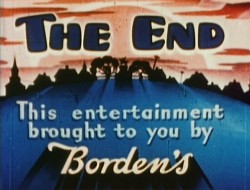
Daily post 18 Apr 2007 08:41 am
Busy busy busy
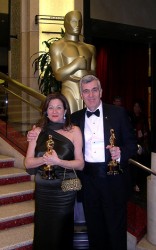 - It’s a busy month for John Canemaker.
- It’s a busy month for John Canemaker.
Just a reminder that Marymount Manhattan College has on display some of the original hand-drawn, animation art from John Canemaker’s Academy Award-winning film The Moon and the Son: An Imagined Conversation. This exhibit opened on Monday, April 16 and will run through May 23 in the school’s Hewitt Gallery of Art. The gallery/school is located at 221 East 71st Street.
The official opening of this show will be on Thursday, April 19, followed by a reception in the Hewitt Gallery of Art at Marymount Manhattan College.
The screening will begin at 5:30 p.m. sharp at the Beekman Theatre, which is located at 1271 Second Avenue between 66th and 67th Streets.
John & producer, Peggy Stern
This event is free of charge for all attendees. However, seats are filling up fast. Please RSVP to Laura Davis, Manager of Alumni Relations via e-mail at ldavis@mmm.edu or phone at (212) 517-0416.
. For those outside of New York who still haven’t seen John’s film, you can catch it on ITunes. Just enter “THE MOON AND THE SON†in the search box at the upper right corner of the iTunes Store home page to preview the film.
. The film will also air on Cinemax on April 22nd at 6:30am EST.
. John also will have a program of his films at the Tribeca Film Festival.
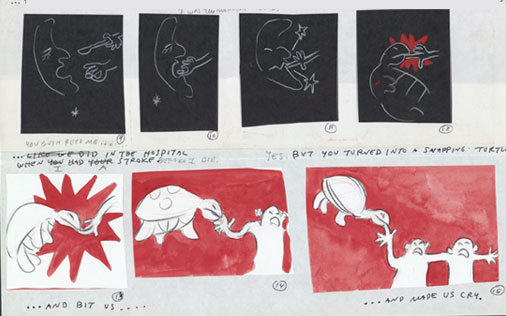
- Another reminder:
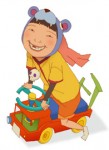 Tekkon Kinkreet will screen at the Museum of Modern Art next week. This is the anime feature that I saw and wrote about last week. The graphics are quite impressive, and it’s a film that’s well worth supporting. There currently is no distributor.
Tekkon Kinkreet will screen at the Museum of Modern Art next week. This is the anime feature that I saw and wrote about last week. The graphics are quite impressive, and it’s a film that’s well worth supporting. There currently is no distributor.
Screenig Schedule:
Wed 4/25 (T1), Thurs 4/26 (T2), Fri 4/27 (T2) – 8:30 pm
Sat 4/28 (T2), Sun 4/29 (T2) – 2:00 pm
Mon 4/30 (T2) – 8:30 pm
Books 17 Apr 2007 07:52 am
How-To Books – part one
- It’s time to talk about books that try to tell you how to make animated cartoons. For better or worse, my interest is in 2D animation of the old fashioned kind. I don’t know enough about cgi animation to know if a book is good, so I won’t talk about them. I don’t like Flash animation, as it exists now, so I’ve never looked at a book about that method of production. I couldn’t tell you what I think is a good book, since I don’t know of any. (Yes, I know my bias is somewhat elitist, but that’s something I’m not going to apologize for. I’m a 2D guy, and can’t change that. I also love puppets and have worked in stop motion, hence I’ll broach that subject, too.) I love the old kind of animation, am glad to be doing it on a computer – using the most modest of methods – so that’s all that I can discuss. What I know.
Saying that. Here’s my first of the How To posts. There are so many books out there, that I couldn’t do it all in one shot. I’m going to start by talking about books that are hard to find.
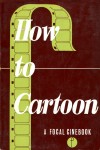 - At one time John Halas was the grandaddy of animation writers. He wa enormously prolific with a number of successful books on how to make animated films. His book, How To Cartoon for Amateur Films was the first, done in 1951 with Bob Privett.
- At one time John Halas was the grandaddy of animation writers. He wa enormously prolific with a number of successful books on how to make animated films. His book, How To Cartoon for Amateur Films was the first, done in 1951 with Bob Privett.
This book is a pocket sized paperback with lots of simple little pen & ink illustrations showing how to build a camera, how to draw with arcs and all the materials you’ll need. The book, to me, seems excessively detailed and complicated since it’s trying to speak to “amateurs.”
Some of the illustrations are priceless. Here are two:
 – Of course, Halas‘ finest book was The Technique of Film Animation which he wrote with Roger Manvell. This book covers all aspects of animation (done in 1959 when it was first publilshed) from cel to cutout to stop-motion.
– Of course, Halas‘ finest book was The Technique of Film Animation which he wrote with Roger Manvell. This book covers all aspects of animation (done in 1959 when it was first publilshed) from cel to cutout to stop-motion.
The illustrations in the book are so engrained in my subconscious that I pull them out as reference often. (Just recently when a friend was looking for animation references on fire, I emailed her as one example, the series of Goofy cels holding the Olympic torch (interestingly the authors mistakenly attribute them to Clock Cleaners) on page 195. Everyone owns this book, don’t they? If not stop wasting time and get a copy somewhere. Try a discount used-book shop like the Strand.
The oddest part of this book is the article in the back of the book by Brian G.D. Salt., Mathematics In Aid of Animation. I’ve always considered myself fairly good at math, but somehow I’ve never been able to understand this chapter. I must have tried reading it a dozen times. I’m sure it’s just me, but I don’t mind admitting it. Somehow, I don’t feel as if I’m missing anything.
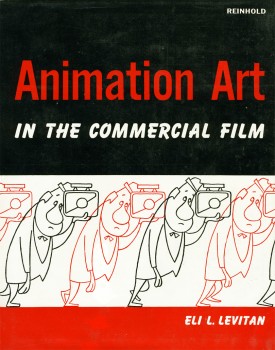 – Eli Levitan, who started in the business as an errand boy at Fleischer’s, wrote a number of books that were all nuts and bolts and never inspired me. Just the same, I still think of them as an important part of my past. His book Animation Art in the Commercial Film is a book I gave some attention to in the past, and I suggest you go to that post to get more information about this book. Check it out here.
– Eli Levitan, who started in the business as an errand boy at Fleischer’s, wrote a number of books that were all nuts and bolts and never inspired me. Just the same, I still think of them as an important part of my past. His book Animation Art in the Commercial Film is a book I gave some attention to in the past, and I suggest you go to that post to get more information about this book. Check it out here.
It’s interesting that Levitan also wrote one of the first consumer books about computer animation in 1977. This book has a big title: Electronic Imaging Techniques: A Handbook of Conventional and Computer-Controlled Animation, Optical, and Editing Processes.
- Finally let me point to a book that I’m not really going to recommend since its information  is so basic, but it did interest me for years. E.G. Lutz wrote Animated Cartoons, How They Are Made Their Origin and Development back in 1920. Back in my younger years, this book was referenced more often than any other by the great animators of the Golden Age. Everyone from Chuck Jones to Walt Disney to Walter Lantz to Bob Clampett mentioned it in interviews I’d read. It became a mission of mine to find the book. My local library in New York didn’t have one, so I kept my eyes open. Eventually, I was able to find one from a rare book dealer, but that happened long after I was well settled in the business.
is so basic, but it did interest me for years. E.G. Lutz wrote Animated Cartoons, How They Are Made Their Origin and Development back in 1920. Back in my younger years, this book was referenced more often than any other by the great animators of the Golden Age. Everyone from Chuck Jones to Walt Disney to Walter Lantz to Bob Clampett mentioned it in interviews I’d read. It became a mission of mine to find the book. My local library in New York didn’t have one, so I kept my eyes open. Eventually, I was able to find one from a rare book dealer, but that happened long after I was well settled in the business.
The book does have a lot of basic information and must have been a real revelation in 1920 to so many people. I guess it was the only book that was available at the time, so it’s understandable how many people back in the silent era were influenced.
A company called Applewood Press reprinted it in 1998, so it’s easy to locate in its reprinted version. hell, now you have the internet, so the original version can be found fairly easily.
Animation Artifacts &Story & Storyboards 16 Apr 2007 08:50 am
Wind In The Willows Part 3
- I had been planning to photograph the final sculpture of the trees, posted yesterday, to show the end results with vehicles gone and park cleaned up. However, the deluge that hit the city, yesterday was the 2nd worst in history. 7.5 inches fell within 12 hours. There was no way I’d have been able to photograph anything in the sheets of rain that was falling. Nor did I want to. I was just as surprised to find that the sandbags worked for my studio. Mine is the only lower level (basement) space in the area that wasn’t flooded. Hallelujah! I don’t have to mop for 8 hours. More rain today.
Now for comedy. Today we have the third part of John Canemaker’s storyboard for The Wind In The Willows. It seems to be not far from the Mr. Toad film, and it’s certainly mopre of an acting board than was the Pinocchio board I’d posted.
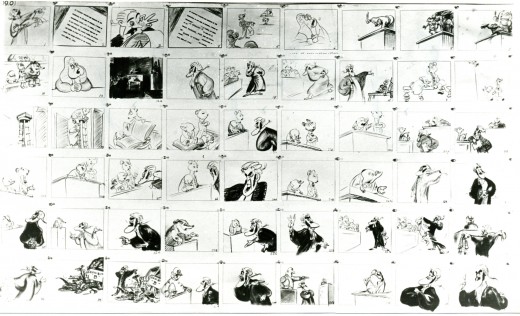 7
7
(Click any image, of course, to enlarge.)
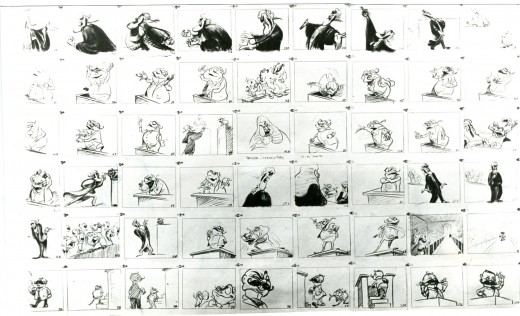 8
8
(Click any image, of course, to enlarge.)
Art Art &Photos 15 Apr 2007 07:47 am
Public Sculpture That Looks Like Trees
- Walking through Madison Square Park this past Monday I noticed what looked like hundreds of branches of trees layed out on the central lawn of the park. It took no time to realize that a public sculpture was about to go up. Unfortunately, I didn’t have my camera or I could have done a before and after photo.
Well it’s taken a week, and the sculpture is still under construction. I brought my camera back that evening, and all week as I passed through the park. I wasn’t able to do a before shot, but I did a just-started-building shot and others to follow. They’re to the point where the last straw . . . er, branch has been added to the whole.
So here are some pictures, if you’re interested. We start with the evening of the first day.
 1
1  2
2
(Click on any image to enlarge.)
 3
3  4
4
You can see the artist’s model on the table in the foreground of pictures #3 – #5 and see how they planned it.
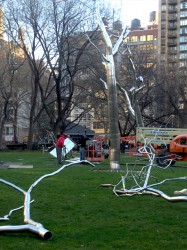 You can see that parts are still left on the ground at this point. The sculpture is going to develop, obvously, into two trees whose branches intertwine with each other.
You can see that parts are still left on the ground at this point. The sculpture is going to develop, obvously, into two trees whose branches intertwine with each other.
Only the highly polished silver of the steel will separate the sculpture from the real trees in the park.
Now we move to the second day I returned with my camera.
We can see that the elements on the ground are fewer, and more of the branches have gone up. The crane is lifting some guys to do the construction after another crane has been used to lift the heavy parts.
I pass through the park at roughly 6:30am daily on my way to the studio. The workers are assembling at that point in the day. It started with about 6-8 people on the first couple of days. It slowly dwindled down to a couple by the end of the week. I also return home at 6:30pm, daily, and there are usually only 2-3 people still there working.
There’s a short brochure available at the moment, but it doesn’t really mention the name of the artist nor even the name of the piece. Perhaps this will go up after the silver trees are finally set up.
 Cranes lift, and workers work. The artist (or maybe it’s a rep) stands watching the building of the structure as it enters its final day.
Cranes lift, and workers work. The artist (or maybe it’s a rep) stands watching the building of the structure as it enters its final day.
Already we can see that the piece is blending into its surroundings. The silver tree isn’t too different, visually, from the others. It probably weighs hundreds of thousands of pounds more, but it’s reflecting a lot of the colors of the sky and its surroundings.
There’s plenty of public art in New York City. Everywhere you go you see odd structures that shape the city. A giant bronze rabbit has been added to Union Square Park. (I first noticed it on the night before Easter Sunday.) There’s a temporary display of very large sculptures by Manolo Valdés in Bryant Park. There’s a giant Picasso sculpture in a housing court three blocks away from my studio. It’s everywhere, and we absorb it into our lives and walk past it daily.
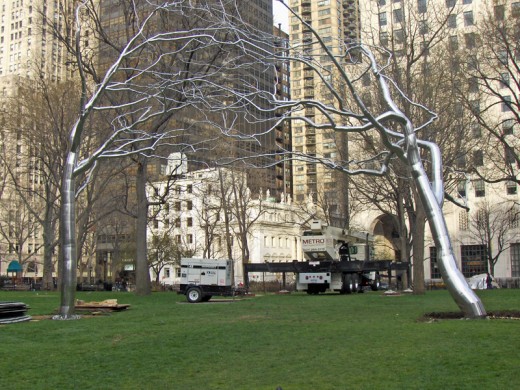
This is the final construction of the trees. I took the picture yesterday late in the day. In a few days, after they’ve cleared all the trucks and debris and have reconstructed the grounds, I’ll take another shot. This is it for now.

Trees in a barrrel outside a local cafe.
They’re not steel, but I like the just the same.
Books 14 Apr 2007 08:43 am
More Animation Books
- There aren’t too many books that deal with the business of animation, social relations, getting a job, etc. When I was young there were many books about cartooning that showed various jobs available to potential cartoonists:
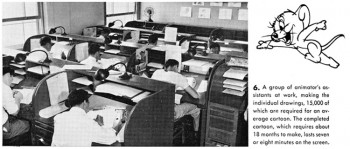 One book: The Complete Guide to Professional Cartooning by Gene Byrnes is a good example of this. It had a whole chapter on “How Animated Cartoons Are Made” featuring lots of photographs from the MGM studio with particular focus on a Tom & Jerry cartoon. Fortunately this chapter of the 1950 book was posted by Dave King on his website: www.sweaterthieves.com.
One book: The Complete Guide to Professional Cartooning by Gene Byrnes is a good example of this. It had a whole chapter on “How Animated Cartoons Are Made” featuring lots of photographs from the MGM studio with particular focus on a Tom & Jerry cartoon. Fortunately this chapter of the 1950 book was posted by Dave King on his website: www.sweaterthieves.com.
I memorized this book when I was a kid, and it’s great to see it again. I was never really a big fan of Tom & Jerry cartoons, but the images in this book perfectly capture, for me, everything I assumed it meant to be working in an animation studio. I still remember another photo or two that I don’t see posted on the site. The memory of one of those pictures always gives me a jolt of a smile sending me back to the good-old-days of cel animation (not 2D computer animation.)
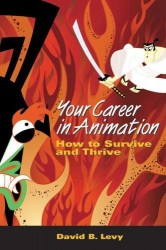 But if we’re talking about books available today, I only really know of one to recommend. Dave Levy‘s book, Your Career In Animation: How To Survive and Thrive is a great one. I have to admit the title turned me away originally since I thought it was another book for complete neophytes. It’s not; it’s much more.
But if we’re talking about books available today, I only really know of one to recommend. Dave Levy‘s book, Your Career In Animation: How To Survive and Thrive is a great one. I have to admit the title turned me away originally since I thought it was another book for complete neophytes. It’s not; it’s much more.
This book offers general ideas which would help out anyone going into any career. David’s focus, however, is on animation: getting a job and how to survive once you get a job. It’s full of smart information and a lot of wit. I wholeheartedly recommend it for beginners as well as those working in the business. The author is a genial guy, and his manner comes across pleasantly in his writing style.
Shamus Culhane was a long-time animator and director of cartoons who owned his own studio in New York (and for a while in Italy.) He wrote two interesting books before he died in 1996. They have a different focus from each other, but there’s a lot of overlap. Both are entertaining reads.
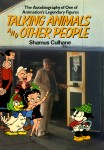 Talking Animals and Other People is Shamus’ autobiography; it’s his version of his own history in the world of animation. The book is a well-written insider’s view into what it was like working in some of the studios during the “Golden Age.” It’s been years since I’ve read these two books; this is how I remember them.
Talking Animals and Other People is Shamus’ autobiography; it’s his version of his own history in the world of animation. The book is a well-written insider’s view into what it was like working in some of the studios during the “Golden Age.” It’s been years since I’ve read these two books; this is how I remember them.
There’s plenty of attitude and personality, as one might have expected from the author, and he articulates many stories about his experiences. However I’m not sure how reliable the history is. It’s not unlike an interesting interview with an animator; the stories aren great but sometimes the memory makes for an unreliable source. While reading it, I felt like I should be running to locate back-up sources to check it all out. There are good stories here, though, and there’s no doubt the man was there.
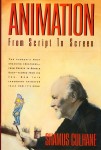 Animation: From Script to Screen gives an account of the different aspects of animation production and tries to fully detail what each of those jobs involves. Shamus wore many hats in the business and he uncovers aspects behind it all.
Animation: From Script to Screen gives an account of the different aspects of animation production and tries to fully detail what each of those jobs involves. Shamus wore many hats in the business and he uncovers aspects behind it all.
This book doesn’t have quite the attitude and personality of his first book, but it does give a good coherent breakdown of the work-a-day business behind animation. There’s a decent overview of world animation Shamus knew at the time. Published in 1988, the book obviously doesn’t spend a lot of time on the computer, but it gives a good view of animation. Both books have lots of illustrations, and many of them are interesting. The printing on the illustrations isn’t the best.
Next week we’ll finally get to the How-to books.
Animation Artifacts &Peet &Story & Storyboards 13 Apr 2007 07:38 am
Wind In The Willows part deux
- Before going directly into The second installment of The Wind In The Willows storyboard, I’d like to say a couple of words about the passing of Kurt Vonnegut. It was a bit of a surprise.
My lawyer was the representative of Mr. Vonnegut and I heard that he was a collector of owl drawings. I had illustrated a book by John Gardner, Gudgekin the Thistle Girl, and the fairy tale featured a witch who changed into an owl. I was asked to trade the original illustration for a signed copy of one of Mr. Vonnegut’s books. Needless to say, I jumped at it. His autographed copy was a cartoon for me in the frontispiece of the book. Unfortunately, the book is in storage or I’d post the image.
I met Kurt Vonnegut a couple of years later and we had a very nice conversation. I’m sad to hear of his accident and the complications that ensued, and I’m even sadder to hear of his death. My condolences to his family and friends and to the world who is now deprived of his intellignece.
- Here are the next three pages of The Wind In The Willows board. As suggested by Michael Barrier in the comment section of part 1. this board was probably assembled to produce a preliminary Leika reel. The giveaway is the lack of dialogue and commentary underneath the drawings. The assembly was made to be photographed.
Fortunate for us it worked its way out of Disney, past many years and many owners into the hands of John Canemaker, who has loaned them to me. There’s some great drawing here.
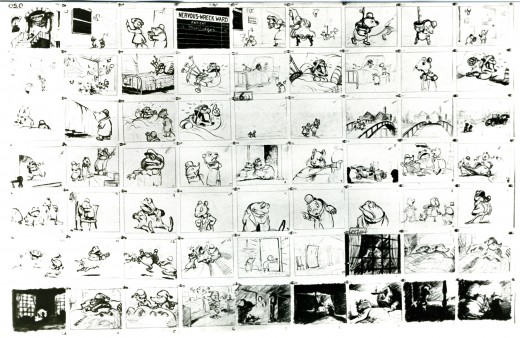 4
4
(Click any image to enlarge for viewing.)
Speaking of Mike Barrier he has some excellent commentary on “Who Killed Cock Robin?” the Silly Symphony short. Mike suggests, appropriately that all the divers elements floating out there – storyboards, drafts, production charts, etc. – can give us a view of a film’s making only when they’re culled together and viewed as a whole. This is what he’s trying to do with the one short. Lots of scouting is necessary to get a bigger picture, otherwise they’re just drawings that don’t tell the larger story.
Books 12 Apr 2007 07:03 am
More history books
- Of course, once you open a can of worms, lots of critters wander out unexpectedly.
I started writing about animation books with a focus on the history books, but I reealized there were many more books that I should list.
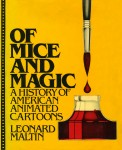 Leonard Maltin‘s Of Mice and Magic originally came out in 1980 and has had a number of revised editions. It was the first big-time book to call itself a “History of Animated Cartoons,” and it does a good job of cataloging a lot of material and reporting on it. The book puts the films in order by studio which is, in some ways, helpful. This is especially true if you’re searching for information about a specific film. Jerry Beck had a large hand in writing this book.
Leonard Maltin‘s Of Mice and Magic originally came out in 1980 and has had a number of revised editions. It was the first big-time book to call itself a “History of Animated Cartoons,” and it does a good job of cataloging a lot of material and reporting on it. The book puts the films in order by studio which is, in some ways, helpful. This is especially true if you’re searching for information about a specific film. Jerry Beck had a large hand in writing this book.
The best part of the book is the attention it gives to some of the New York studios: Terrytoons and Paramount, in particular. These studios are usually given short shrift by animation histories; there’s just so little written about them.
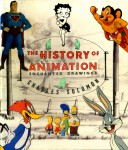 Charles Solomon wrote a larger – more of a coffetable book – history of animation. Enchanted Drawings: The History of Animation covers the traditional American Studio history and attacks it in a mostly chronological order. However, the book also gives large focus to the International and Independent scenes. These are traditionally ignored in most of the books, yet, here, they’re discussed in some detail in a confident, articulate style. Plenty of beautiful, color illustrations fill the book and add to its value.
Charles Solomon wrote a larger – more of a coffetable book – history of animation. Enchanted Drawings: The History of Animation covers the traditional American Studio history and attacks it in a mostly chronological order. However, the book also gives large focus to the International and Independent scenes. These are traditionally ignored in most of the books, yet, here, they’re discussed in some detail in a confident, articulate style. Plenty of beautiful, color illustrations fill the book and add to its value.
You can get a good indication of the caliber of this book from its cover. The characters illustrated come in many forms, yet in every case the best looking versions of these characters was chosen. There’s good taste in this book from cover to cover.
There are two books about Silent film animation. Other than the Canemaker books on Winsor McCay and Felix the Cat, these are the only two books I’d like to highlight, and they’re both important ones.
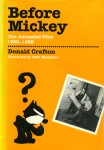 With Before Mickey, Donald Crafton has written a very strong book on the history of silent animated films. He carefully points to all of the great and not-so-great animation filmmakers and studios. From Winsor McCay to J.R.Bray to Otto Messmer, Crafton doesn’t miss much, and if he does, I can’t find it. Given the difficulty just in viewing many of these films it’s easy to say that the amount of research for this book was obviously enormous.
With Before Mickey, Donald Crafton has written a very strong book on the history of silent animated films. He carefully points to all of the great and not-so-great animation filmmakers and studios. From Winsor McCay to J.R.Bray to Otto Messmer, Crafton doesn’t miss much, and if he does, I can’t find it. Given the difficulty just in viewing many of these films it’s easy to say that the amount of research for this book was obviously enormous.
Since I have a real curiosity about the period, I found the book riveting. Few people have seen many of the films discussed, so it’s not a book that many are going to want. However, I’m pleased that it is one of the most solid animation histories out there. If I have any complaints it’s that the writing style is a bit dry, but that’s quibbling. I treasure the book.
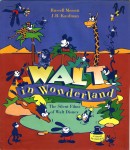 Walt In Wonderland is necessary to any big Disney fans. Russell Merritt and J.B. Kaufman have done a brilliant job on this book. It gives strong attention to the silent films of Disney: the Alice comedies and the Oswald shorts. There’s a good history of the studio from Kansas City to Hollywood with lots of illustrations.
Walt In Wonderland is necessary to any big Disney fans. Russell Merritt and J.B. Kaufman have done a brilliant job on this book. It gives strong attention to the silent films of Disney: the Alice comedies and the Oswald shorts. There’s a good history of the studio from Kansas City to Hollywood with lots of illustrations.
The book not only features a history of the studio, but it shows the production methods used and invented in what was an ever-changing process back then.
Merritt and Kaufman have a more recent book, Walt Disney’s Silly Symphonies: A Companion to the Classic Cartoon Series, is a book I have on order and haven’t yet read. If what I’ve heard about it is accurate, I expect it’ll be another great book. Once I’ve read it, I’ll let you know what I think.
Next time, finally, books about the craft rather than the history.
Books &Comic Art 11 Apr 2007 07:44 am
Even More Pigs
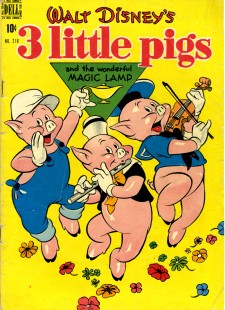 – I used to love comic books when I was a kid. I read them incessantly. It grew to become an enormous thing between me an my father when he absolutely banned them in the house. Comic books back in the 50s, everyone knew, rotted out the minds of little children. I couldn’t resist and continued to sneak them into my room. I couldn’t get enough of Donald Duck or Unca Scrooge or, even, Little Lulu.
– I used to love comic books when I was a kid. I read them incessantly. It grew to become an enormous thing between me an my father when he absolutely banned them in the house. Comic books back in the 50s, everyone knew, rotted out the minds of little children. I couldn’t resist and continued to sneak them into my room. I couldn’t get enough of Donald Duck or Unca Scrooge or, even, Little Lulu.
One of my earliest memories comes from myself at the age of 8 trying to imagine what this genius, Walt Disney, looked like. This is before the Disneyland television show, before the media and PR hounds poured into the mind of an 8 year old child. I mean Walt Disney signed those comics – his script name appeared just above the Donald Duck masthead on the cover – he was the one responsible.
(Click any image to enlarge.)
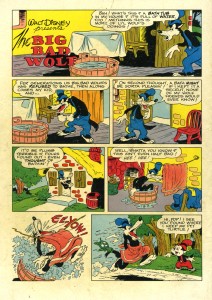 Well, I’ll tell you what I imagined:
Well, I’ll tell you what I imagined:
An oddball version of Farmer Alfalfa (that must be what Disney looked like) stood at a large, Rube Goldberg-like machine, right out of the Industrial Revolution, and he turned out these books on a conveyor belt. That’s all I remember about it, but I do remember it. Obviously, my father was right. My mind was rotting away.
I was finally caught. It was a large, Special issue comic book. “Dennis The Menace Goes To Hawaii.” That was it, and I was punished. Two weeks to bed early without television didn’t stop me, and somehow it seemed alright a few weeks later to read comics again. My comic book craving continued. I didn’t collect them; I just read them and appreciated the drawing. (They were well drawn back then.)
The back cover
So now, every once in a while, I come upon a rarity
on ebay and can’t help myself. A few months ago I found
this Three Little Pigs comic book and had to have it. I didn’t even know there were Three Little Pigs comics! It was published in 1949.
I’m amazed at how successful The Pigs were. The short was released in 1933. Before television how did the legacy live on long enough to keep them popular?
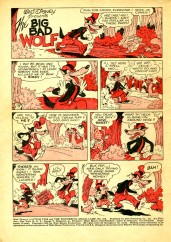
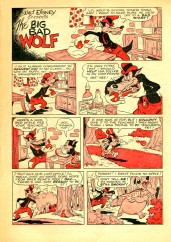 There were only a couple of other shorts with the same characters:
There were only a couple of other shorts with the same characters:
The Big Bad Wolf 1934,
The Three Little Wolves 1936, and
The Practical Pig 1939.
The last, prior to 1949, was a WWII educational short, The Thrifty Pig in 1941.
Eight years later this comic book appeared.
55 years later, I bought a copy. Still rotting my brain.
There were no ads in the magazine back then. These are the
inside covers, front and back.
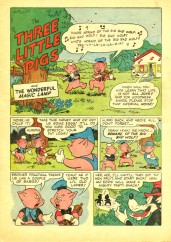 1
1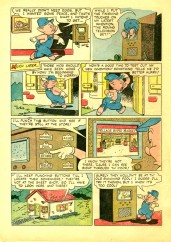 2
2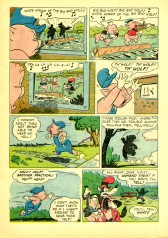 3
3
The comic book incorporates other characters from the Disney fold. The witch from Snow White appears when it’s convenient, and Br’er Bear appears.
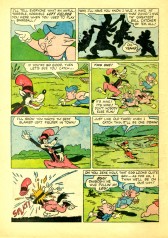 4
4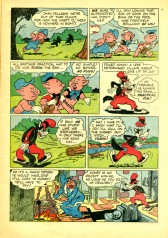 5
5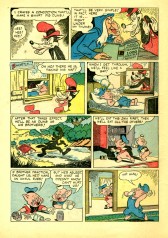 6
6
The above are the first six pages of the story. It’s the first of three stories in the 32 page comic book.
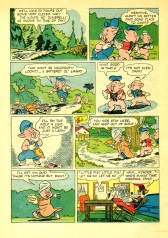 14
14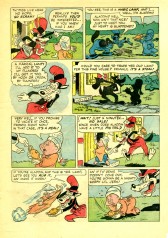 15
15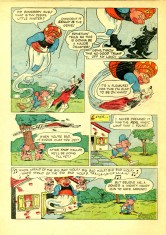
These are the last three pages of the story. I just wanted to give a taste of the comic.
